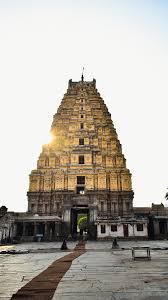Temples have been an important part of many cultures throughout history. They are places of worship and community, often showcasing unique architectural styles and cultural significance. The design and construction of these sacred structures involve a variety of special techniques and considerations.
The Importance of Temple Design
Designing a temple is a detailed process that requires a deep understanding of religious and cultural values. Architects and planners work closely with religious leaders and community members to ensure that the temple meets spiritual needs and adheres to traditional practices. The layout, materials, and decoration all reflect the temple’s purpose and the beliefs of its followers.
Choosing the Right Temple Construction Contractor
One of the first steps in building a temple is selecting a reliable and experienced temple construction contractor. This professional plays a crucial role in bringing the design to life. A skilled contractor understands the specific requirements of temple construction, including the need for precision in the design elements and the use of traditional materials.
Key Aspects of Temple Construction
1. Architectural Design
The architectural design of a temple often includes intricate carvings, domes, and spires that reflect the religious themes and cultural heritage of the community. The design must accommodate various functions, such as prayer halls, sanctums, and community spaces. An experienced temple contractor will ensure that these elements are crafted with great attention to detail and accuracy.
2. Material Selection
Choosing the right materials is essential for both the durability and aesthetic of the temple. Traditional materials such as stone, wood, and marble are often used due to their longevity and ability to be sculpted into detailed designs. The temple construction contractor should be knowledgeable about these materials and their properties to ensure they are used effectively.
3. Structural Integrity
Ensuring the structural integrity of a temple is crucial, especially considering its long-term use and the often elaborate designs. Engineers and contractors work together to make sure that the temple is built to withstand the test of time and environmental conditions. This includes reinforcing foundations and ensuring that the weight of the structure is evenly distributed.
The Role of the Temple Contractor
The temple contractor’s role extends beyond mere construction. They are involved in every stage of the project, from initial planning to the final touches. They work with architects to interpret and execute the design, manage construction teams, and ensure that the project adheres to all regulatory and safety standards. Their expertise is vital in creating a temple that is both functional and spiritually fulfilling.
Final Touches and Decorations
Once the main structure is completed, the temple undergoes a final phase of decoration. This can include painting, installing intricate carvings, and setting up religious symbols and artifacts. The contractor collaborates with artisans and decorators to ensure that these elements enhance the temple’s overall design and significance.
Conclusion
The construction of a temple is a complex process that blends art, architecture, and spirituality. From the initial design to the final touches, every aspect of temple building requires careful planning and skilled execution. A knowledgeable temple construction contractor plays a key role in this process, ensuring that the temple is built to meet the highest standards of quality and reverence.

